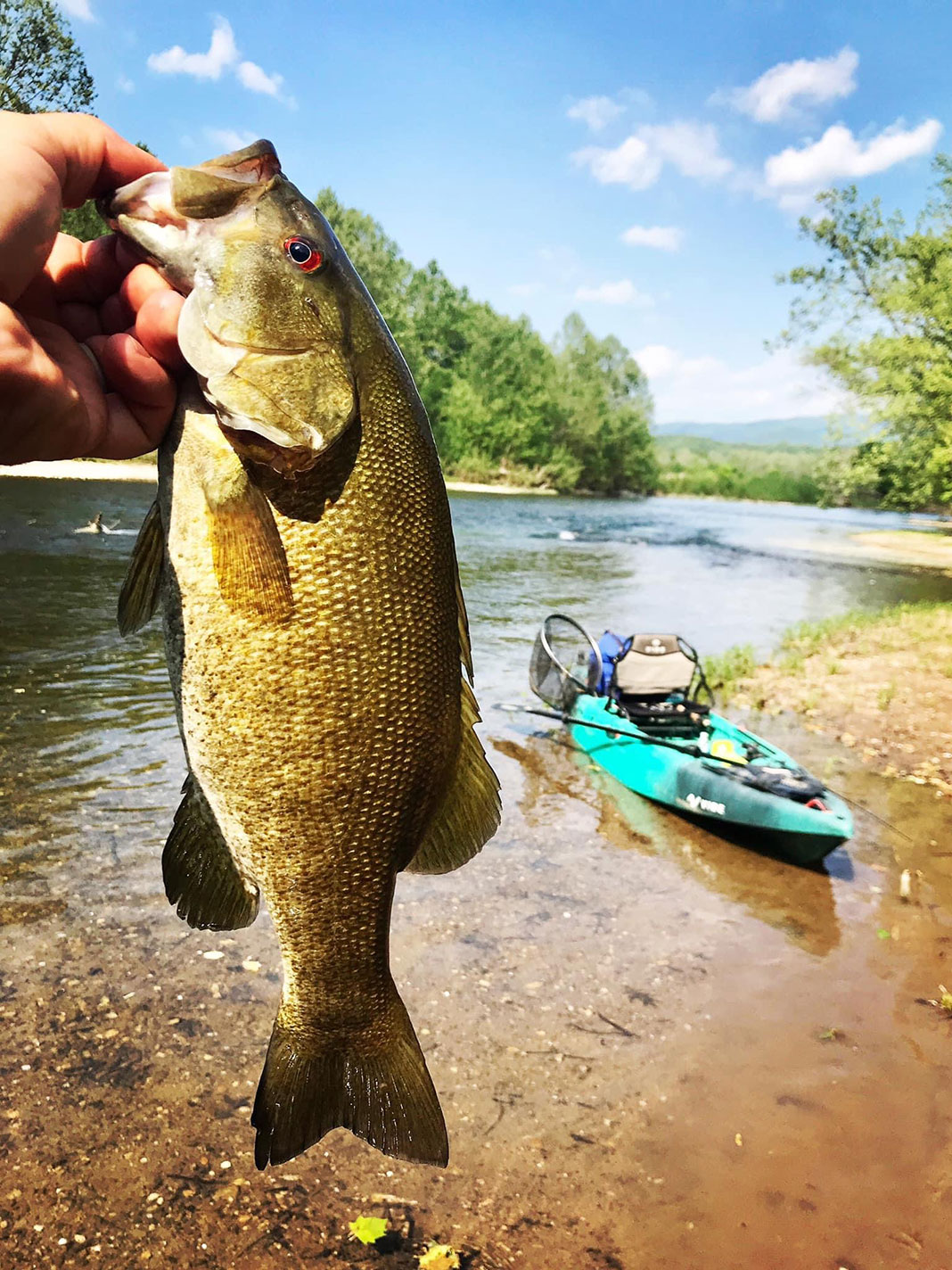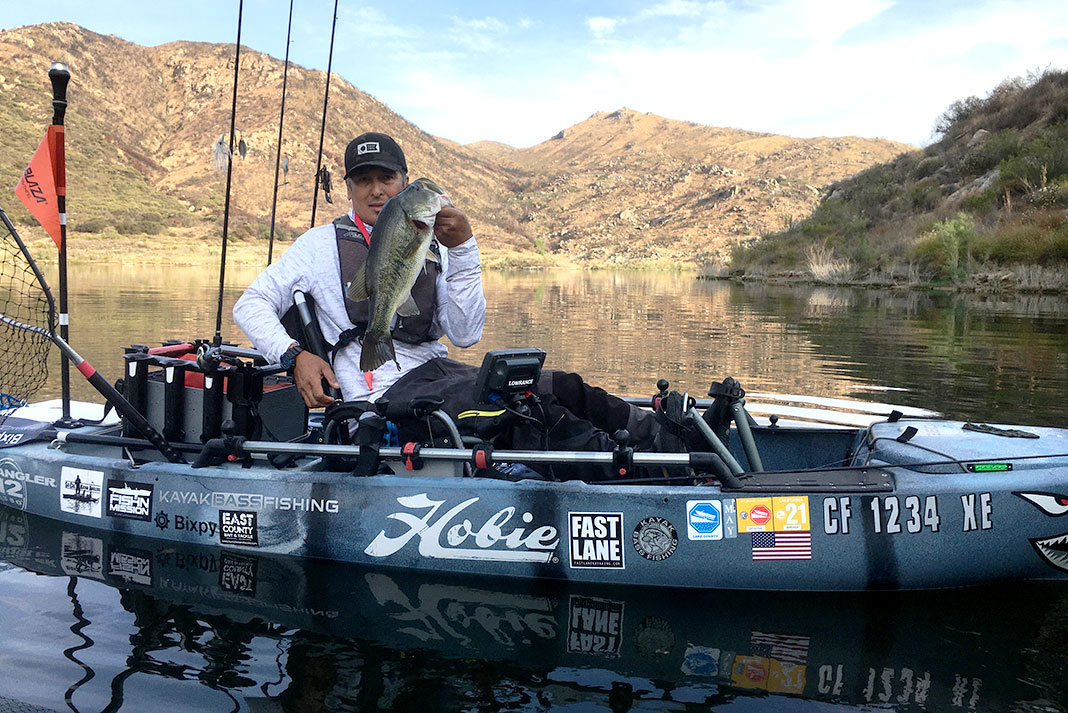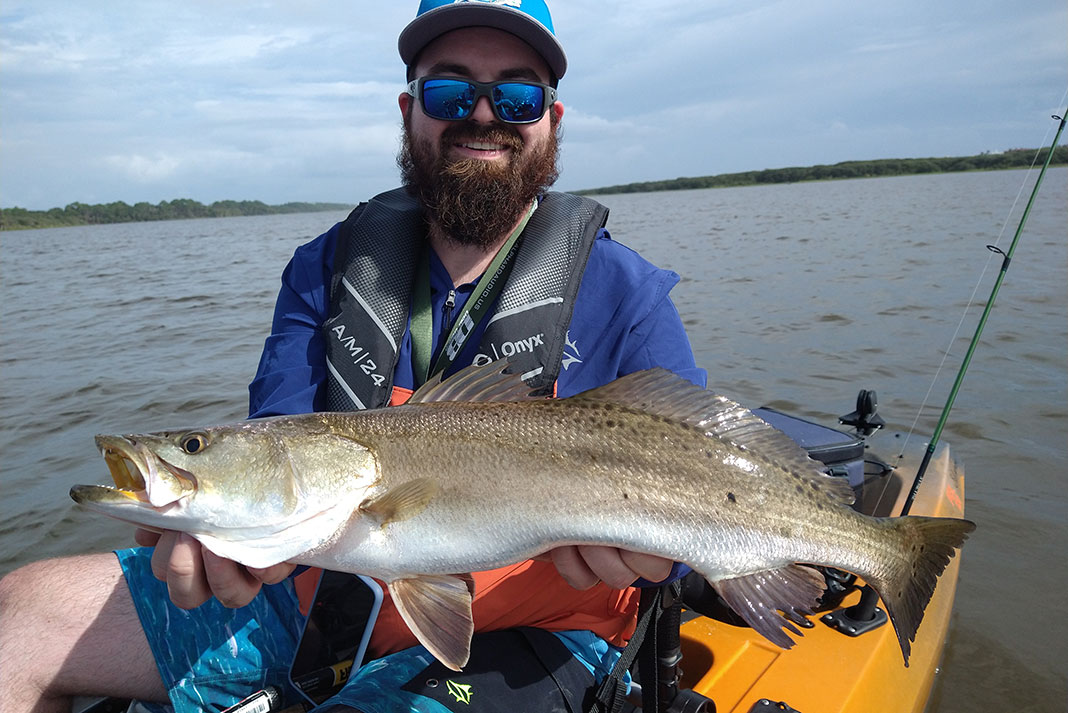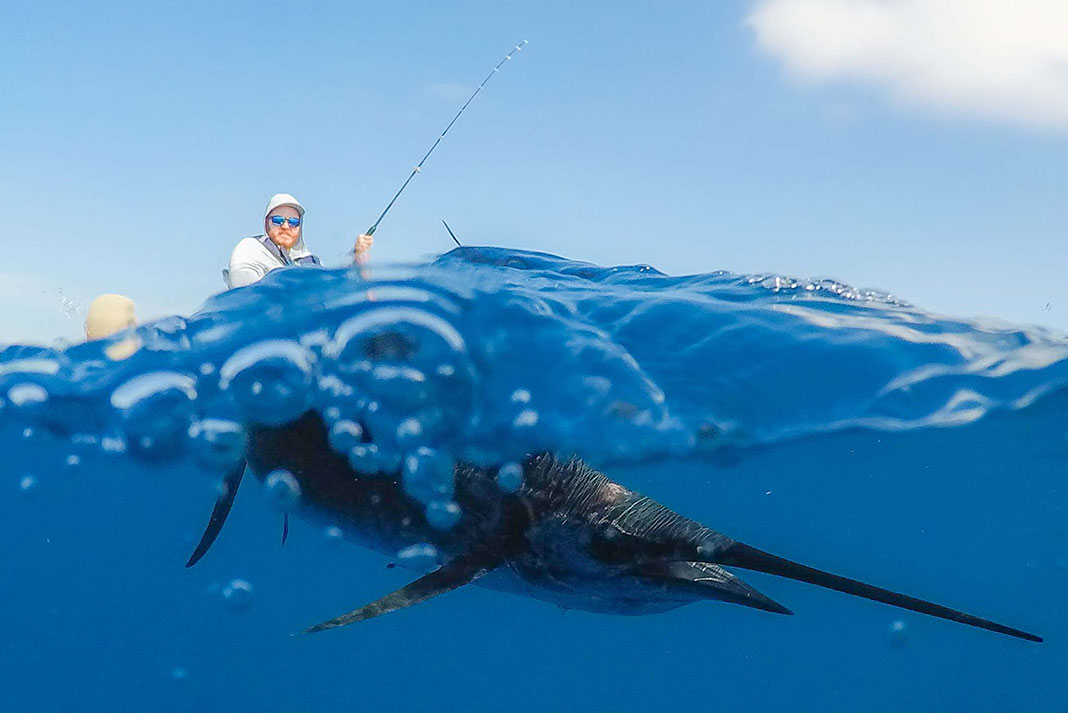Products You May Like
For most of us, the best time to go fishing is when we have time to go fishing. Too often, everyday life gets in the way of getting on the water. Weekend warriors fish in the rain and wind because they can, not because they should. Professional anglers who fish every day develop trends and patterns to predict when the fish are feeding and when they have lock jaw.
Even if you don’t get to choose when you fish, putting together a plan considering optimal weather, water and astrological conditions can help you make the best of limited time. We asked four pros for tips on how they develop a plan to figure out when and where the fish will bite.
When to Fish for 4 Top Species

1 Dirty River Bass
Angler: Zach Adkins, Vibe Kayaks team member
Location: West Virginia
Target species: River small-mouth bass
I fish river smallmouth from freezing winter to scorching summer and my favorite time to target the fish is after a rain event. As long as the water temperature is above 55 degrees, a few inches of rain will turn on the fish.
The pattern has two parts. First, watch the weather forecast for one to three inches of rain. Second, monitor the USGS river gauges for the water level to rise one to three feet. Most people like pretty, clear water, but I favor murky or dirty water for river smallies. High, dirty water has produced many 20-inch smallmouth. The swift, stained water puts bait and predators on the move.
To take advantage, I use a moving bait like a crankbait, jerkbait, spinnerbait or swimbait. In dirty water, I go with a bright lure. Get the smallmouth’s attention, make the fish angry and it will bite.

2 Cranky Largemouth
Angler: Derwin Chang
Location: California Delta
Target species: Largemouth bass
Lake bass may be a captive audience, but identifying trends for where and how I catch largemouth depends on water conditions and time of year. I am mostly a crankbait fisherman, casting my lure to edges and weedlines where I see bass chasing bait.
Two keys to the bite are time of year and water clarity. My favorite time to fish with crankbaits is early winter and spring when there is less grass in the lake so I can work a crankbait through the shallows and mid-depth. In the colder months, there are fewer people on the lake, so the fish see less pressure. When the weather is cloudy and windy, I find bass let down their guard.
Water clarity is the most important trend in lure choice. When the water is murky, I go with a shallower crankbait, working it along the weedlines and in the shallows. On clear water days, I go with a deep diver and fish the drops and edges.
3 Time to Sail
Angler: Eric McDonald, owner of Deep Blue Kayak Fishing
Location: Boyton Beach, Florida
Target species: Sailfish
Truth be told, I fish for sailfish seven days a week and catch them in all conditions. But these trends seem to lead to the best action. We have sailfish year round, but the fish migrate from November through winter. During this time of year, I watch for an approaching cold front to turn on the sailfish. A cold front brings north wind and a north current. The problem is, a cold front often causes rough seas. I have to pick and choose my days, looking for surf in the two- to three-foot range.
While I love a glassy calm day, I find a little chop to be more productive. Water quality is a big factor. While I’m heading out, I look for dirty green water to transition into clear blue water. Then, I look for flying fish and schools of ballyhoo, the sailfish will be nearby.
When it comes to time to fish, I don’t like to fish around the full moon. It seems the morning bite is slow and the fish don’t get active until afternoon. A full moon seems to throw off the sailfish’s feeding schedule.

4 Clocking in Sea Trout
Angler: Bart Swab, owner of Action Kayak Adventures
Location: St. Augustine, Florida
Target species: Speckled sea trout
A decade ago, I started noticing sea trout feeding patterns dependent on wind direction and major and minor feeding times. When I started guiding, I really dialed in an interesting trend catching big speckled trout at the end of my morning trip. Usually, the trout and redfish bite best at first light, but I picked up on a pattern of big trout when the sun was high in the late morning. The key to the bite is the predictable switch of the wind from light southwest in the morning to hard east or south east in the afternoon. This turns off the smaller trout and reds, but it fires up big trout.
My notes on the wind change led me to an even more interesting pattern involving the moon. When I noticed the late morning bite, I realized the fish are on a 12-hour feeding schedule. So, they feed at night under the moon, then turn on again in the early afternoon. I started fishing later into the afternoon confident I could put my clients on fish in the hottest part of the day. The moon affects fishing, but investigating how it affects your local fishery will unlock real secrets.
This article was first published in the Early Summer 2022 issue of Kayak Angler Magazine. Subscribe to Kayak Angler Magazine’s print and digital editions, or browse the archives.
Blue water equals big bites when it’s the right time to fish. | Feature photo: Eric McDonald
